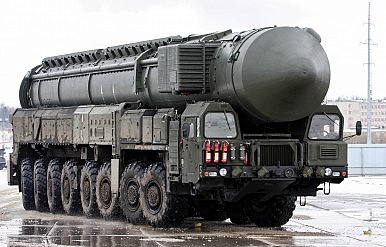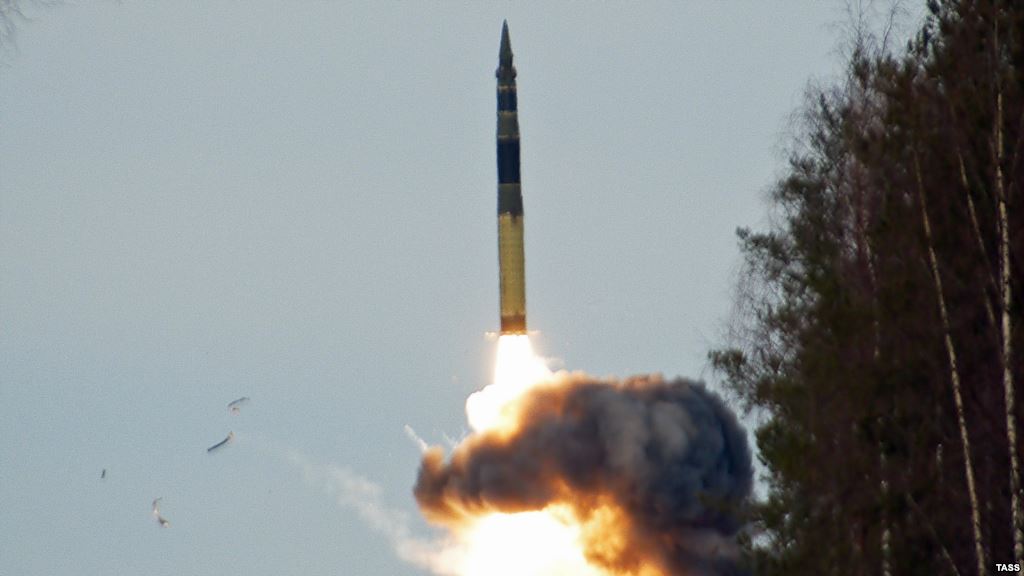Russia Test Fires Intercontinental Ballistic Missile
The primary aim of the missile drill was to test the ICBM’s capability to overcome advanced missile defense systems.
By Franz-Stefan Gady
The Diplomat
Russia’s Strategic Missile Forces have successfully test-fired an intercontinental ballistic missile (ICBM) during a military exercise, the Russian Ministry of Defense announced on September 9, according to TASS news agency.

_
The test launch of the nuclear-capable Topol-M (aka RS12M2/NATO reporting name SS-27) or more advanced Topol MR (aka SR-24 Yars/NATO reporting name SS-27 Mod2) ICBM—the defense ministry did not specify the missile type—took place at the Plesetsk Cosmodrome, in Arkhangelsk Oblast, approximately 800 kilometers north of Moscow.
One of the rationales behind the missile launch was to test whether the ICBM can penetrate advanced missile defense systems. According to the defense ministry, the ICBM succeeded in doing so and successfully destroyed a target at a testing ground on the Kamchatka peninsula in Russia’s Far East.
“The main aim of the launch is to confirm the basic flight and technical characteristics of the Topol intercontinental ballistic missile and test an advanced combat outfit and means of overcoming missile defense systems,” the statement reads. “The missile’s experimental warhead hit a hypothetical target with high precision at a testing ground on Kamchatka peninsula.”
At the beginning of 2016, the Strategic Missile Forces announced that they will conduct 16 ICBM test launches in 2016–with 14 dedicated to testing new missiles and warheads—and over a hundred exercises in total (See: “Russia to Launch 16 Intercontinental Ballistic Missiles in 2016”). Given the emphasis on new missile systems, it is likely that the test involved a new variant of the Topol ICBM family such as the Topol MR.
The Topol MR is the Strategic Missile Forces “newest operational fifth-generation intercontinental ballistic missile (ICBM), which can carry multiple independently targetable nuclear warheads and was first introduced into service in July 2010,” I explained previously. The Topol MR along with the single-warhead Topol-M missile system will be the mainstay of Russia’s future mobile ICBM force. (A large number of older silo-based Topol ICBM–Nato reporting name SS-25– is slated to be decommissioned from service by 2021.)
As I wrote elsewhere (“Russia to Add 40 New ICBMs: Should the West Be Worried?”):
Russia is in the middle of modernizing its strategic and nonstrategic nuclear warheads. (…) Moscow has currently 4,500 nuclear warheads, of which roughly 1,780 strategic warheads are deployed on missiles and at bomber bases. An additional 700 strategic warheads are kept in storage along with approximately 2,000 nonstrategic warheads.
Overall, Russia approximately has 300 ICBMs deployed with a little over 1,000 warheads. The Strategic Missile Forces are also working on testing a new silo-based super heavy liquid-propelled ICBM, the RS-28 Sarmat. The first test-launch of the missile, purportedly capable of carrying ten heavy or 15 light warheads is scheduled for last quarter of 2016. The missile is expected to enter service by 2020. Russia has also been testing soc-alled hypersonic glide vehicles, warheads capable of penetrating advanced missile defense systems.
___
http://thediplomat.com/2016/09/russia-test-fires-intercontinental-ballistic-missile/
